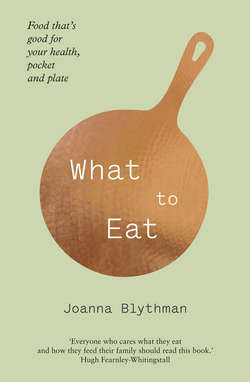Читать книгу What to Eat: Food that’s good for your health, pocket and plate - Joanna Blythman, Joanna Blythman - Страница 20
ОглавлениеSpinach and Swiss chard
For a concentrated blast of greenness in your diet, spinach is hard to beat, a supremely versatile leaf that earns its keep both cooked and raw. There are two sorts of spinach. The most common type in shops is true spinach, sometimes called summer spinach, which is fine, silky, tender and smooth when cooked. It has an affinity with cream, eggs and both mild and pungent cheese. A coarser type of spinach, known as perpetual or winter spinach, is more often grown by gardeners, or supplied by small-scale growers in vegetable boxes or at markets. It is slightly less green, with a less pronounced spinach flavour and is more fibrous. If you want elegant spinach, then perpetual spinach isn’t it. For cooking purposes, it is better treated like spring greens, lightly blanched and then dressed with oil or butter, or stir-fried.
Swiss chard is excellent when cooked and hugely under-appreciated. You can think of it as two vegetables packed into one. Its pearly central stalks offer a unique taste that bears some comparison with artichoke, palm heart and salsify. The green leaves, which initially seem quite coarse, will soften down beautifully when sautéed gently. Rainbow chard has red and yellow central stalks, but it tastes the same as the white-stalked sort.
Things to do with spinach and Swiss chard
• Pearly central stalks of Swiss chard make a fantastic creamy, cheesy bake.
• The classic eggs Florentine tops a half muffin with buttery cooked spinach, a poached egg and hollandaise sauce.
• Chopped or blitzed cooked spinach adds thickness, texture and colour to curries and Middle Eastern stews.
• Make a salad by throwing garlic-rubbed fried bread croutons on baby spinach leaves dressed with olive oil, lemon juice, sea salt, and lots of black pepper and Parmesan.
• Spinach goes brilliantly with ricotta cheese. Use as a filling for cannelloni topped with béchamel sauce, or to make Italian green gnocchi, or as a filling for a vegetable tart.
• Chopped Swiss chard, both stems and leaves, is great stir-fried with chilli and sliced onions, then served on a potato rosti with a soft-fried egg.
• Green Swiss chard leaves make an interesting green ingredient for a meat stuffing.
• Add shredded leaves of Swiss chard to an autumnal minestrone.
Are spinach and Swiss chard good for me?
Spinach and Swiss chard are rich in the antioxidant vitamins C and E, which help protect against free radicals that can predispose the body to disease; vitamin K, which promotes bone health; folate, which helps prevent birth defects; and iron, which prevents anaemia. They are also a good source of soluble fibre, which slows down the rate at which sugar is released into the bloodstream. The green colour of the leaves hides the fact that chard and spinach are also a good source of carotenes, such as lutein and zeaxathin, which may perform many beneficial functions, including protecting the eyes against age-related degeneration and lowering the risk of heart disease, certain cancers and stroke.
Spinach is a vegetable that in the past has been shown to contain pesticide residues above safe limits. The most recent tests suggest that the residues in spinach do not pose a threat to health, but small amounts of residues have been detected in over half the samples tested. As pesticide residues are a toxin, it makes sense to minimize exposure to them, and buying organic spinach would be a good way to do that. As Swiss chard is considered to be something of a minority vegetable, it has not been monitored for pesticides in any systematic way. However, it is popular with organic growers because it is less susceptible to disease than spinach, and therefore more easily cultivated without pesticides. Even conventionally grown Swiss chard is likely to have lower residues than spinach.
How are spinach and Swiss chard grown?
Spinach and Swiss chard are grown in open fields or in polytunnels. Spinach is grown in the UK and Ireland throughout the year but considerable amounts of spinach are imported, usually from Spain, Portugal and Italy. Swiss chard, too, is cultivated in the UK and Ireland all year. Imported Swiss chard, generally organic, comes from Italy.
Where and when should I buy spinach and Swiss chard?
In the coldest months, hardier perpetual spinach and Swiss chard may be easier to find than the more tender true spinach, which is susceptible to frost. Swiss chard is less widely available, but it is a staple of the organic vegetable box and prominent on farmers’ market stalls.
SUPERFOOD LORE
Spinach once had the reputation of being an outstandingly rich source of iron. This superfood lore around spinach generated the cartoon character Popeye the Sailorman, whose weightlifter’s muscles and prodigious strength were attributed to his taste for the vegetable: ‘I’m strong to the finish when I eats me spinach.’ Then in the 1930s it emerged that the vegetable’s iron had been overstated by a factor of ten, due to a decimal point being put in the wrong place. Now it is accepted that while there are very many health reasons to eat spinach, it contains a level of iron comparable to other leafy green vegetables, no more.
Will spinach and Swiss chard break the bank?
By washing your own spinach, rather than buying it pre-washed, you can save a considerable amount of money. Your spinach will also be more robust because it hasn’t been put through a pack house bath of water – often chlorinated.
Swiss chard is one of those vegetables that are rarely found in supermarkets and where stocked is much more expensive than at a farmers’ market stall. Gardeners insist that it is easy to grow, so if you do have any green space, try growing it from seed. It should keep going for months and save you lots of money.
